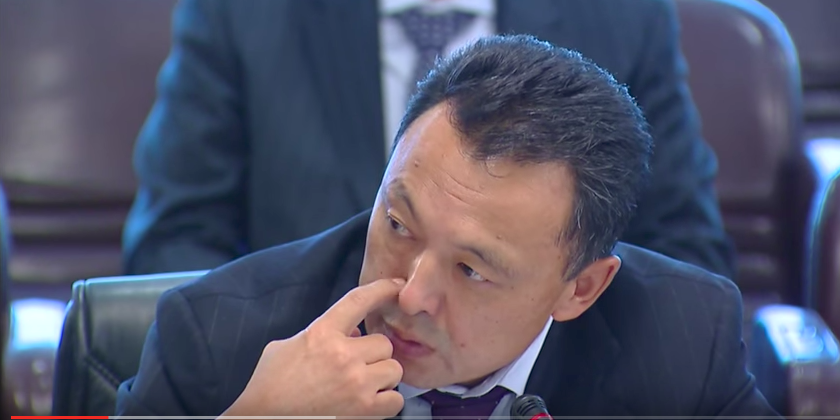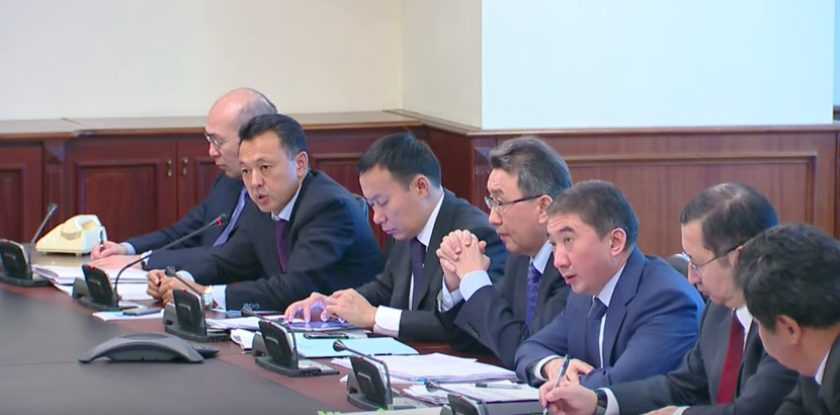Completing the sale of 51% of the KMG International shares to the Chinese will de-facto enable KazMunayGaz to write off the biggest part of the gigantic Kazakh investments to this project (about 4 billion US dollars). For those who do not understand, we are talking about the infamous Rompetrol.
On June 13, 2017, the Kazakhstanskaya Pravda newspaper published an article written by former chairman of the KazMunayGaz National Company Sauat Mynbayev. The article is called “From Optimizing to Increasing Effectiveness and Transparency”.
In it, Mynbayev says, “By striving to increase the effectiveness of its operational model, KazMunayGaz had taken on this complex problem and, as of now, is no longer in possession of a number of its assets”.
Here is how the author explains the reasons behind the need of this state-owned company to “improve itself”, “The KazmunayGaz Group is an enormous system that has been built over a period of 15 years. Now, it consists of oil-and-gas, oil-service, marine, ship operator, avia companies, research institutes, educational facilities, and other specialized departments. Overall, it has 199 companies and 90 thousand employees”. So, “therefore it desperately needs to simplify its operational model, optimize the assets, increase the effectiveness and transparency to the maximum”.
Among other things, Mynbayev reported on the upcoming completion of the sale of 51% shares of the company’s main foreign asset, KMG International, that, in Kazakhstan and abroad, is also known as Rompetrol.

Mynbayev says, “Last April, the company announced signing the package deal with a large Chinese energy company China Energy Company Limited (CEFC) to sell 51% of the KMGI shares to the Chinese partners. The completion of this deal amounting to $680 mln is expected to take place any time now. Moreover, the Chinese intend to invest $3 bln to the future development of the company. The money will be spent on increasing the Petromidia oil-processing plant capacities, building a gas station network, and other projects”.
Mynbayev believes that “The deal has a strategic significance for Kazakhstan. Based on the conditions of the deal, the country will continue to export its oil to the Petromidia oil-processing plant in Romania. At that, retaining 49% of the shares enables the Kazakhs to control the operational activities of the company and make decisions together with the partner”.
Let us disagree on the statement that the deal has a strategic significance for Kazakhstan. However, there is no doubt that, if the deal is completed successfully, it will become a big break for KazMunayGaz and its current management. Moreover, it will enable them to immediately solve several problems including those of the political, financial, managerial, and image-building nature that have been tormenting the company for a long time.
To support this, we will analyze the KazMunayGaz disclosure, particularly the financial report on the period of the first three months of 2017.
From it, it follows that –
- For KazMunayGaz, KNG International generated constant losses that were de-facto sinking the company.
- KazMunayGaz was unable to defend its interests in the judicial proceeding with the Romanian government on the matter of privatizing the companies previously included in the KMG International Group. There was also the question of the size of the Romanian government’s share in them.
- Selling 51% of the shares to the Chinese will de-facto enable KazMunayGaz to write off the biggest part of the gigantic Kazakh investments to this foreign project (about 4 billion US dollars).
The data from the chapter “Terminated Operations and Assets for Sale” shows the operational losses of the company.
Page 17 of the table shows that the earnings from the products sold and the services provided, for the first three month of 2017, amounted to 570142217 thousand tenge and the cost value of the products sold and the services provided – to 548122964 thousand tenge. At that, the earnings from the “terminated operations and assets for sale” amounted to 97769515 thousand tenge, as for the cost value, they amounted to 201925926 thousand tenge.
Thus, the KMG International gross loss amounted to 104156411 thousand tenge. And this is considering that its gross profit for the first three months of 2017 received from the other projects and companies amounts to as little as 22019253 thousand tenge.
Page 3 of the financial report shows that the KazMunayGaz gross profit amounted to 81940789 thousand tenge, the pretax profit – to 33464975 thousand tenge, the after-tax operating profit – to as little as 603878 thousand tenge. However, adding the 102358682 thousand tenge after-tax profit recieved from the terminated operations generated as a result of eliminating the KMG International losses, the state company’s first quarter profit amounts to as much as 102962560 thousand tenge.
The fact that KazMunayGaz was unable to defend the Kazakh interests and its own investments to the project is shown in the commentary to the financial report (page 29, form 5). Based on this data, among the affiliated companies where the group has significant non-controlling shares, there are Rompetrol Downstream S.R.L. (45.37% shares), Rompetrol Petrochemicals S.R.L. (45.37% shares), Rompetrol Rafinare S.R.L. (45.37 % shares), Rompetrol Vega (45.37% shares).
And this is all considering that Kazakhstan spent $2.85 bln to buy 100% shares of these companies. It means that the Romanian government had gained its object.
As for the fact that KNG will soon write off the biggest part of the gigantic Kazakh investments to KMG International, it is shown in the “Terminated Operations and Assets for Sale” chapter, page 16.
Based on this data, as of March 31, 2017, the KMG “assets for sale” amounted to 996280463 thousand tenge, the “liabilities associated with the assets for sale” – to 538670017 thousand tenge, the “net assets directly associated with the disposal group” – to 457610446 tenge.
Obviously, by selling 51% of the KMG International shares to the Chinese investors for $680 mln (about 214 bln tenge), KazMunayGaz will suffer some losses. These losses, however, will be covered by the fact that the company will no longer include the Romanian group data into its aggregated indicators. This, as we have mentioned before, will immediately enable Mynbayev and his subordinates, as well as the Samruk-Kazyna National Welfare Fund, solve several problems including those of the political, financial, managerial, and image-building nature.
Let us consider each problem separately.
- The political problem will be solved because the matter of the KazMunayGaz foreign adventure (when the Romanian assets were bought for higher than the market-level prices and $1.1 bln (later registered as “good will”) disappeared) will be de-facto closed.
- The financial problem will be solved because, thanks to the KMG International elimination, the company will dramatically improve its financial situation and disclosure.
- The managerial problem will be solved because the necessity to confront the complex problems of ensuring the return on the assets in the conditions of the supra-competitive European market will no longer exist.
- Finally, the image-building problem will be solved because Rompetrol and everything associated with it (in other words, a lot of negative information) will no longer have anything to do with KazMunayGaz.




